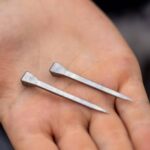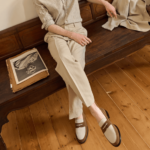Even though Australia has a lot of sun all year long and natural light is something most homes have in abundance, good lighting for interior purposes is still something to pay a considerable amount of attention to. And how wouldn’t it be, when everything looks so different and good under the right lighting? If you’re in the process of redecorating your home, or simply looking to make a change that won’t cost you much but will definitely make a difference, then hitting the Australian lighting stores is a good start.

Once you get into a specialized Australian lighting store, or visit one online, you’ll realize how little you know about lighting – the types and colours of bulbs, their usage and compliance with the overall design and colour scheme of your rooms and finally the importance of wattage. Also, every room has a very different lighting requirement, and for some you want to be able to change the ambiance with the help of lighting. In this post I’ll concentrate on few basic things in order to introduce you to the vast world of good lighting:
Types of bulbs
There are generally three types of bulbs you can choose from:
- Incandescent bulbs produce light by utilizing an electric current for heating the metal filament. These come in a variety of colours and are very good except for their one flaw – they don’t last long.
- Fluorescent light bulbs excite mercury vapors by utilizing electricity. These are also known as gas-discharge lamps. In contrast to the incandescent ones, these lamps tend to last longer and are also more physically durable, meaning, they don’t break.
- Light-emitting diodes or commonly known as LED bulbs, are semiconductor devices. When an electric current passes through them, they glow. These are by far the most energy efficient light bulbs and also the most expensive ones.
A short lesson on wattage.
Electricity is measured in watts, and one watt is the standard unit for these measurements. There are three categories, or levels of wattage that coincides with a certain type of ambiance that is created as a result of the strength of the light the bulb emits: mood lighting (offered by a bulb of 40 watts), average lighting or also known as in-between lighting (60-75 watts) and task lighting (offered by a bulb of 100 watts).
Watts and lighting products
Different lighting products require different wattage to produce the desired light effect. Meaning, you can’t put a fluorescent bulb on a side table lamp and expect to feel comfortable. That’s simply not how it goes. Here are some basic rules:
- Recessed lights shouldn’t be turned into spotlights, so keep them at 60 watts maximum;
- Nightstand lights are good if you’re into reading before you go to sleep. These should not be too strong because they’re going to disturb you. 50-60 watts tops are just enough to create the dimmed room effect.
- For the so-called boob lights, a 75 watts light bulb is perfect, since these are ceiling lamps.
- Bathroom sconces should have a light bulb of about 60-80 watts; probably the highest wattage in your house because that’s where you most need strong light; bathrooms usually don’t have windows to allow natural light to get it;
- Kitchen lighting should be strong. Some kitchens have a lot of natural light, but in this case it doesn’t matter; you need to have all the light possible to work attentively with knives. Get 100 watts light bulbs for the kitchen.
To conclude, it’s highly important how powerful is the light source in your rooms. Not just from a decorative point of view, but also from a practical one; you want visibility and comfort at the same time, not headaches and eye discomfort.



